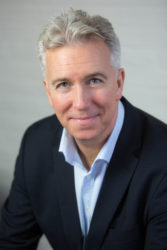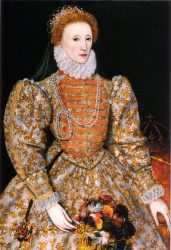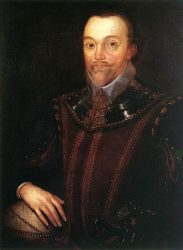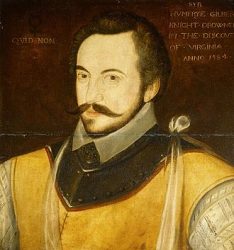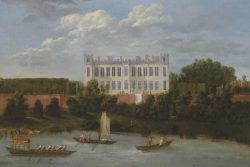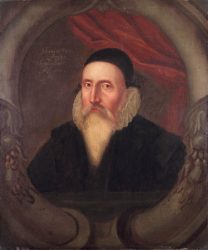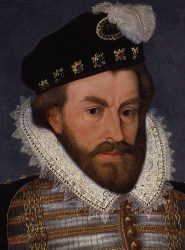Date/Time
Date(s) - Monday 21 October 2019
8:00 pm - 9:00 pm
Location
Duke Street Church
Categories No Categories
This is the Richmond Local History Society’s first ever joint event with the Barnes and Mortlake History Society.
The speaker
Dr Simon Targett is a former Financial Times journalist who lives in St Margarets and is a member of the Richmond Local History Society. His book, New World Inc: How English Merchants Founded America and Launched The British Empire, co-authored wth American business writer John Butman, was published in 2018 by Atlantic Books. It tells the story of how England’s merchant adventurers founded America before the Pilgrims.
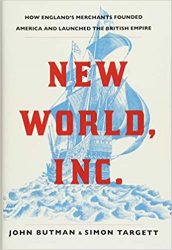 The local connection
The local connection
Richmond and some neighbouring villages played a significant, if walk-on, part in the story of America’s founding and the launch of the British Empire.
At her palace in Richmond – her favourite residence and the place where she chose to take her last breath – Elizabeth I met with financiers, adventurers and colonists who were involved in the settling of America.
Meanwhile, Syon House and, a little further away, Mortlake, were places that left their mark on the story that unfolded more than 400 years ago.
In September 1580, Francis Drake returned from a three-year voyage around the world – the first by an Englishman (and the second after Magellan’s nearly 60 years before). He was summoned to Richmond Palace by Elizabeth, and there he divulged three secrets: one, the southern tip of South America was not, as widely supposed, connected to a great Southern continent (Terra Australis); two, he had struck a potentially lucrative trade deal with the sultan of one of the Spice Islands; and three, he had staked out a colonial presence on the west coast of America (near San Francisco) that he named Nova Albion. This would provide the basis for future English claims to America.
Three years later, Sir Walter Ralegh, by now a fixture by Queen Elizabeth’s side, was residing at Richmond Palace when he sent a mark of the queen’s affection to his half-brother: Sir Humphrey Gilbert. She had known this adventurer since he was a teenager and she feared for his safety as he embarked on a colonial adventure to America, noting that he was “not of good hap by sea”. To protect Gilbert, she asked Ralegh to send him a pendant of “a lady with an anchor”. This he did. But it didn’t work. Gilbert got to Newfoundland, successfully claiming it for the queen and thereby adding to her imperial estate. But on his return, his little ship sank without trace. Sir Winston Churchill noted that with his death, the world lost “the first great English pioneer of the West”.
After Gilbert’s death, his half-brother Ralegh took up where he left off, and sent out the first successful (if not enduring) colonial expedition: to Roanoke Island in what is now North Carolina. Managing the preparation was a young Oxford scholar called Thomas Harriot. He devised a new alphabet to communicate with the Algonquin Indians – until then, communication had been limited to sign language. He also produced a dossier based on his eyewitness reports of life in America. On his return, he was introduced to the Duke of Northumberland, and he went to live at the duke’s estate at Syon. There, he produced some pioneering science, including the first drawing of an astronomical object using a telescope: several months before Galileo. He also continued to advise colonial adventurers while he lived at Syon, including the merchants funding the Virginia Company that founded Jamestown.
Syon House was also connected to the story of America’s founding in at least two other ways:
- George Percy, younger brother of the Duke of Northumberland who sponsored Harriot, spent time at Syon House before and after going out on the first expedition to Jamestown. He served as a temporary governor on two occasions – one after Captain John Smith of Pocahontas fame, who was serving as governor, was forced to return to England after surviving a possible assassination attempt by disgruntled colonists (including Percy himself).
- Pocahontas, the celebrated daughter of a Powahatan chief, visited Syon House during her visit to England.
At Mortlake, John Dee, a brilliant wizard-like Cambridge mathematician who would have been at home on the set of a Harry Potter film, held court at a rambling mansion that featured one of the greatest private libraries in Europe (and bigger than anything then available at the Oxbridge colleges). He was visited by Elizabeth I, as well as countless courtiers, and he drew up the first blueprint for England’s imperial future, coining the phrase “British Empire”.
He helps to bring the story full circle since he dedicated his imperial blueprint to Sir Christopher Hatton – the courtier who played an influential role in the development of Drake’s circumnavigation. Paying tribute to Hatton, Drake renamed his flagship The Golden Hind after the central feature of Hatton’s coat of arms: a hind trippant.
Simon Fowler reports on Simon Targett’s talk
In his talk to the Richmond Local History Society and the Barnes and Mortlake History Society Dr Simon Targett spoke about the part that three dignitaries with connections to our local area had in the early settlement of North America. He argued that three generations of English merchant adventurers—not the Pilgrims, as we have so long believed—were the earliest founders of America. Profit—not piety—was their primary motive. The work of reaching the New World required the very latest in navigational science as well as an extraordinary appetite for risk. As this absorbing history shows, innovation and risk-taking were at the heart of the settlement of America, as was the profit motive. Trade and business drove the founding of America, and determined what happened once English ships reached the New World.
Queen Elizabeth I, who spent much time at Richmond Palace, encouraged these ventures. The fall of Calais to the French in 1558 and the closing of much of Europe to English exports led for the search for new markets by new ‘companies of adventurers’: the first joint stock companies. Diplomatic relations were established with Muscovy and between 1576 and 1578 an expedition to the fabled kingdom of Cathy tried to pass through the North West Passage. Sir Francis Drake visited the Queen in Richmond on his return from his round-the-world voyage of 1577-1581, giving her 80lbs of gold as a return for her investment in the expedition.
Mortlake’s most famous resident, the polymath John Dee, was also involved; he provided technical advice, teaching navigational skills to John Frobisher, who led the ill-fated expedition to Cathy. Dee was a passionate advocate of English expansionism and it was he who first coined the phrase British Empire.
Thomas Harriot lived for a while at Syon House in the employ of the 9th Duke of Northumberland. Simon Taggett said Harriot deserved to be known as the ‘English Galileo’ for his work in astronomy and mathematics. He accompanied the first English attempt to settle North America at Roanoke in 1585, learning the Algonquin language while there. He returned home in 1587 to obtain supplies back in England.
The evening was an interesting insight into the economics and politics of late Tudor England.
